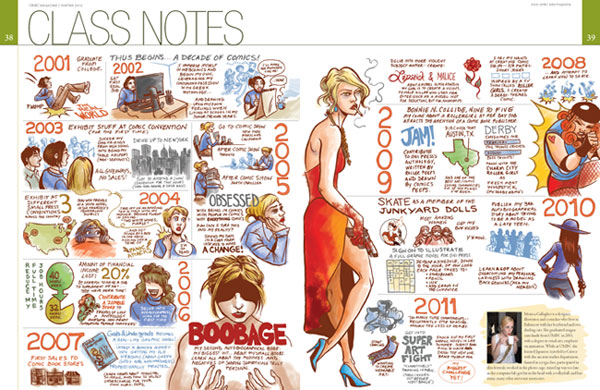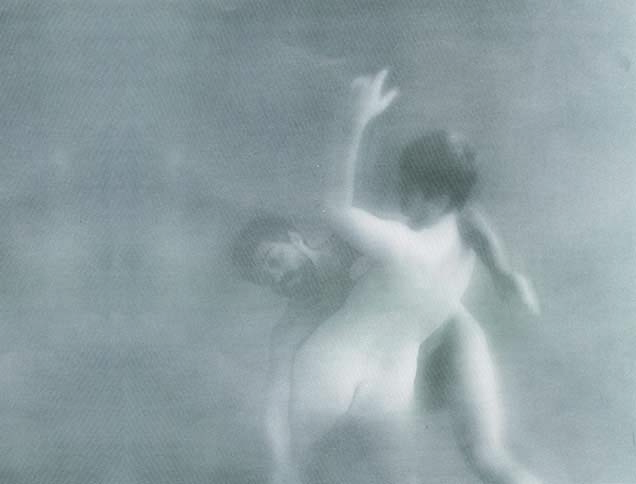PUZZLE PAIR
When Marianne and Don Engel first met and started to date, they assembled a 1000 piece glow-in-the-dark neon jigsaw puzzle of the Eiffel Tower. Now almost three years later, Don, an assistant vice president for research at UMBC, and Marianne, a research scientist at the Biotechnology High Performance Computing Software Applications Institute at Fort Detrick, have moved on to assembling the mother of all puzzles – 10,000 pieces of paper from a shredder.
The Engels recently completed the Defense Advanced Research Projects Agency (DARPA) Shredder Challenge, coming in second out of nearly 9,000 teams. The Challenge consisted of five puzzles, or shredded documents, to be assembled by each team. The puzzles were ordered in levels of increasing difficulty and the Engels completed all of the first three and some of the last two. Unfortunately, they came to the competition one week late. “If we’d had an extra day, we definitely would have finished,” says Marianne. “The hardest thing,” she says, “was that the contest was time-limited.”
The Engels completed the first puzzle manually on the computer by designing a program that would digitally cut all the pieces out, move them around, rotate them, and slide them around on a computer screen. “Then,” says Don, “we didn’t have to deal with our cat jumping on the table and knocking the pieces all over the floor.”
For the rest of the contest, Don and Marianne split the difference between a completely automated solution and a completely manual solution. “We figured,” says Don, “that if we went for a completely automated solution we would lose because there were probably people who were more experienced in computer vision than we were, and that if we went for a completely manual solution there were teams that had more people than we did and we probably would lose.”
Their strategy was to look for things that a human would need computer assistance for in order to do well. “We would do tasks manually until we realized enough about what we were doing to automate that part,” says Don.
The Engels worked on the competition every night after work and every weekend. Don even took one vacation day. “We spent hundreds of hours,” he says. Despite the time commitment Marianne says, “It was a lot of fun. We really, really enjoyed it.”
As for personal security – are people who shred their personal documents like credit card and bank statements safe from the Engels? Don and Marianne say that they are. “We only had to deal with a very few shreds,” says Don. For example, there were only six-thousand shreds for the fifth puzzle. Puzzle five was only three pages. And, says Marianne, “you’re not going to shred one document and throw it in the trash, and then shred the next document and throw it in the trash.”
Don agrees: “If you had many more pages it would drastically increase the complexity.” This goes for your average criminal, too, says Don. “As long as you shred a lot of personal information at one time you’re safe.”
— Nicole Ruediger
DOG TAG
Many students broadcast their UMBC pride in traditional fashion – on a black and gold t-shirt, hoodie or ball cap. But UMBC seniors Chris Snyder ’12 and Chris Bowie ’12 have taken their case of Retriever Fever one very permanent step further.
“It was my last season of cross country, so I wanted to do something special,” says Snyder, a mechanical engineering major who along with Bowie had the new UMBC retriever logo tattooed on his left calf last spring.
Since its debut in summer 2010, the Retriever logo has spread quickly across the university’s walls and furniture, but never quite so indelibly as this. The inking process – including the addition of traditional cross country wings at the base of the dog – took about half an hour per runner, they said.
“You know, I like this school and I put all four years here into (a sport) I love,” says Bowie, a political science major. “It just made sense to want something permanent from a place that means something to me.”
So far, neither runner regrets the decision (or, at least, admits it). In fact, they both claim to get quite a few compliments. “You know, it might actually become a tradition,” says Bowie. “A lot of the freshmen runners want to get the dog… but they say they want to prove themselves first.”
— Jenny O’Grady
FAME GAME
On February 4, UMBC director of athletics Charles Brown headed up another distinguished class inducted into the university’s Athletic Hall of Fame.
Joining Brown in the biennial celebration of UMBC athletic and academic achievement were Jen Dragoni ’04 (women’s lacrosse), Brad Green ’04 (swimming & diving), Adam Grossman ’06 (track & field, right), Ted Lawler ’98 (men’s soccer), Josef Novotny ’04 (men’s tennis) and Keith Puryear ’90 (UMBC’s head tennis coach from 1990 to 2008).
UMBC’s Athletic Hall of Fame now boasts 119 members, chosen for their successes as student athletes at the university and their status as proud alumni of the university.
Brown is the longest-tenured director of athletics at the NCAA Division I level in the state of Maryland. In the past 11 years, Retriever teams have won 52 league titles and made 31 appearances in NCAA Championship competition and in the past 12 years, 32 student-athletes have earned Academic All-American honors and the student-athlete graduate rate is 10 percent higher than the university rate.
The February ceremony at the Westin-BWI hotel also honored Marvin Mandell, who received the athletic department’s Charles Woolston Award. The award is given to an individual who provides outstanding service to the department and strives to improve the student-athlete experience. A professor of policy sciences, Mandell has served as the university’s NCAA faculty representative for the past nine years.
— Richard Byrne ’86 and Steve Levy ’85
Tags: Winter 2012



